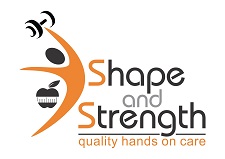Physiotherapy Treatment In Tennis Elbow!
Tennis Elbow is involved with the muscles and tendons of one’s forearm. It leads to inflammation of the tendons which join the forearm muscles on the outside of the elbow. Physiotherapy treatment can be of great help. The primary goal of this treatment is to improve the strength as well as the flexibility of one's forearm muscles. Now, before we take a look at the tips regarding physiotherapy treatment, let us brief
Symptoms
If a person suffers from the problem of tennis elbow, then it’s sure to cause pain and tenderness on the outside of one’s elbow. The pain is at its peak when the elbow is kept still, while there might be variations in the pain when it is in use. There are other symptoms, which include:
Trying to lift the arm can cause discomfort as it results in pain.
One can also feel the pain while writing or even when anyone tries to grip small objects.
People can even encounter stiffness accompanied by pain when they try to extend his or her forearm at length.
Causes
There are a number of causes behind the occurrence of Tennis Elbow. They include:
Incorrect movements of the arm on a repeated basis, which can result in the tendons getting torn.
Those who play sports like badminton, tennis and squash that require excessive movement of racquets.
Any manual work that requires regular lifting of the wrist.
Sports activities that involve an extensive amount of throwing.
Tips Regarding Physiotherapy Treatment For Tennis Elbow
Consult a physiotherapist to undergo physiotherapy treatment for tennis elbow, the therapist would help to provide strength and flexibility of forearm muscles. The following are some of the tips regarding Physiotherapy treatment to treat tennis elbow:
A physiotherapist can offer the modern technique of dry needling the wrist extensions in order to improve the range of motion among patients.
Modern physiotherapy treatment for tennis elbow also includes the use of Kinesiology Tape, which can relieve pressure, relax associated muscles and also increase blood circulation.
Cupping is another mode of physiotherapy treatment, which can help increase blood flow to the affected tissue and improve the length to rest muscles
Physiotherapy can include a patient wearing an elbow strap, which wraps around his or her upper forearm in such a way that the pressure gets relieved on the tendon attachment.
A physical therapist might even apply ice and electrical stimulation to ease out the pain and improve the healing process of the tendon.
Physical Therapy sessions can also include iontophoresis, which makes use of mild electric current to insert anti-inflammatory medicine.
Once the pain subsides, a physical therapist provides inputs on different exercises like Elbow Bend, Wrist Turn, Wrist Lift and Palm Up, Towel Twist etc.
